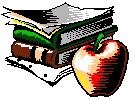 Rethinking
The Academy:
Rethinking
The Academy: Rethinking
The Academy:
Rethinking
The Academy:Readers using hypertexts can choose to move between this node and, say, my teaching philosophy, with equal facility if I choose to build a link to that site. Once they've gone to another part of my website, there is no assurance that they will choose to come back to this place, this node, again. Readers can and do go to sources right off my site, and I may not draw them back again. (Frames can help with this problem by providing a table of contents that is always present no matter how many mouse clicks away the reader has traveled.)
In fact, readers may not even be aware that they have crossed a boundary. A link might lead to another author's text, leading to possible confusion or misidentification of the new text, or to a text written years before by the original author. What is a real rupture between two texts written (possibly) for different audiences and for vastly different purposes is, for electronic readers, a fairly seamless transition between two texts linked by a simple and easy mouse click.
Readers might see the two texts as one document
However, readers using a print hypertext (the research article, for instance) cannot so easily make the same assumptions since they are forced to access reference texts with somewhat more effort than a mouse click. If I wish to cite a book, or someone else's print article, readers who want more information would have to go to a library. In other words, they would have to do what we have called "research" to get the same experience the average electronic reader has while reading an electronic hypertext.
Print readers also cannot so easily confuse the date of two texts since they have to know the month and year an item was located (where that information is appropriate) to locate and cite it. As a result, they will be more aware of the difference between an article written (or at least published) two months ago and one published ten years ago than the electronic reader who cites the date visited, not the date written.
Last Modified: August 2, 1996
Copyright © 1996 by Keith Dorwick